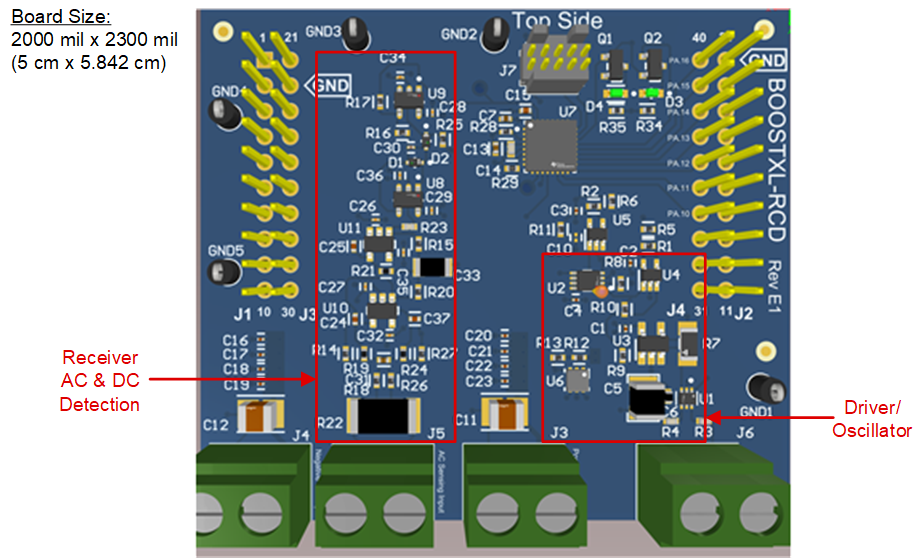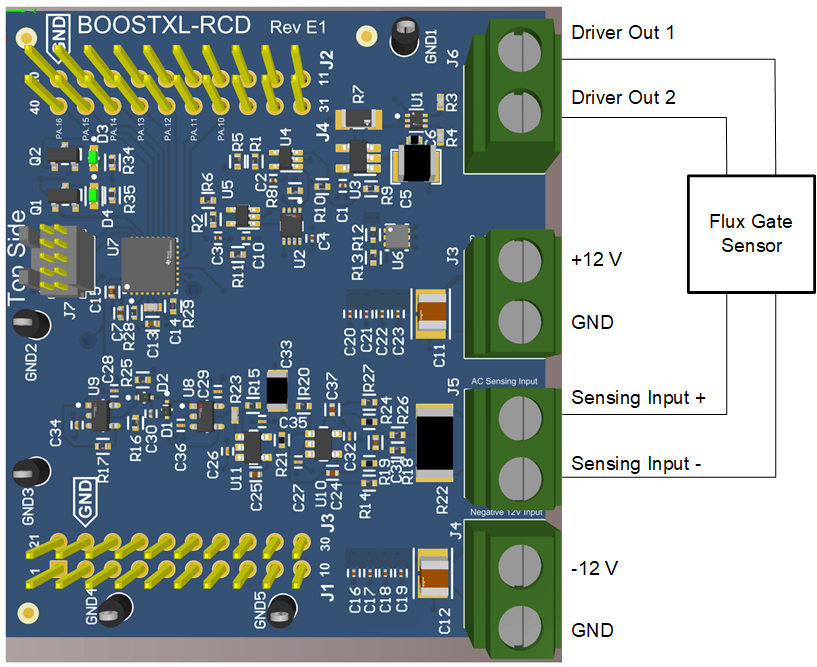TIDUF03 December 2022
- Description
- Resources
- Features
- Applications
- 5
- 1System Description
- 2System Overview
-
3Hardware, Software, Testing Requirements, and Test Results
- 3.1
Hardware
- 3.1.1 Board Overview
- 3.1.2 Filter Stage
- 3.1.3 Differential to Single-Ended Converter
- 3.1.4 Low-Pass Filter
- 3.1.5 Full-Wave Rectifier
- 3.1.6 DC Offset Circuit
- 3.1.7 Auto-Oscillation Circuit
- 3.1.8 DRV8220 H-Bridge
- 3.1.9 Saturation Detection Circuit
- 3.1.10 H-Bridge Controlled by DFF
- 3.1.11 MCU Selection
- 3.1.12 Move Away From Timer Capture
- 3.1.13 Differentiating DC and AC From the Same Signal
- 3.1.14 Fluxgate Sensor
- 3.2 Software Requirements
- 3.3 Test Setup
- 3.4 Test Results
- 3.5 Fault Response Results
- 3.1
Hardware
- 4Design and Documentation Support
- 5About the Author
3.1.1 Board Overview
The TIDA-010237 is in a BoosterPack™ Plug-in Module form factor to connect to an MSP430 or MSPM0 LaunchPad™ Development Kit. Figure 3-1 shows the top side of the reference design and highlights the board size that is 5 cm × 5.842 cm as well as the AC/DC Detection and Oscillator subsystems.

Figure 3-1 Subsystem Location on Board Hardware
Figure 3-2 highlights the connections for both the power supply and sensor to the board. The terminal header J3 and J4 are connections for an external power supply where J3 is for positive12 V and GND. Terminal header J4 is for negative 12 V and GND.

Figure 3-2 Power Supply and Sensor Board Connections
Connector J5 and J6 are for connecting the driving coil on the Hitachi nanocrystalline core. J6 connects one side of the two drive coils to the DRV8220 outputs. J5 connects the other side of the drive coil to a 1-kΩ sense resistor of the receive detection circuit.